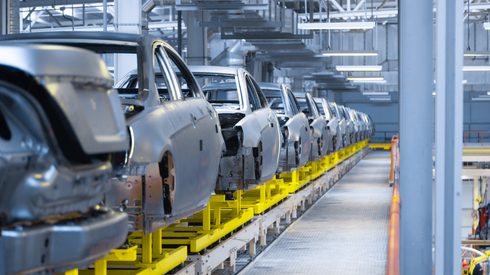High copper prices continue to drive cobalt oversupply
The largest source of cobalt – the copper-cobalt mines in the Democratic Republic of the Congo (DRC) – which accounted for 76% of global cobalt production in 2023, and that number forecast to have remained unchanged through 2024 and 2025, according to Fastmarkets researchers.
Cobalt is usually extracted from copper ore at a ratio of 10:1 copper to cobalt, which means that increases in copper production costs can have a direct impact on cobalt costs and supplies. And through 2024, high copper prices and tight concentrate supplies incentivized significant expansions in copper mining capacity.
China Molybdenum Co (CMOC), a major copper-cobalt producer, posted a 78% year-on-year increase in copper production in the first nine months of 2024 – resulting in a 127% (47,399 tonnes) surge in cobalt output to 84,722 tonnes of cobalt during the same period.
But with cobalt demand remaining decidedly sluggish, copper’s upward trajectory will continue to fuel cobalt oversupply and, combined with the fact that copper production is poised to expand further, this will keep cobalt prices under pressure.
According to Fastmarkets researchers, copper prices are expected to remain strong through the remainder of 2024 and throughout 2025, supported by growing demand for renewable energy and electric vehicles (EVs).
“In the short term, higher copper prices will continue to incentivize mined supply growth in the DRC,” Fastmarkets research analyst Robert Searle said.
And a trader said cobalt’s secondary role mean that its oversupply will continue to grow.
“Producers in the DRC will continue to mine copper to capitalize on its higher profitability. And even if the cobalt by-product is left unsold, the producers will still make great profits solely on copper,” the trader said.
Fastmarkets researchers forecast a 1.1% growth in refined copper supply for 2025.
Indonesia nickel production to have growing impact on cobalt
Nickel production has increasingly shaped the cobalt market, particularly through Indonesia’s rapid expansion of its mixed hydroxide precipitate (MHP) output.
Indonesia became the world’s the second-largest supplier of cobalt and, in 2024 alone, is forecast to have supplied 10% of the world’s cobalt – up from 7% in 2023.
Indonesia’s refined nickel industry, supported by Chinese investment, has become a cornerstone of China’s nickel supplies and Chinese producers dominate in Indonesia’s MHP projects, ensuring a steady feedstock supply for China’s downstream battery industry.
Despite short-term weakness in nickel prices and a bearish market, Chinese investments in projects to extract cobalt from nickel laterite ore using the high-pressure acid leach (HPAL) process, highlight a long-term strategy to secure critical resources for battery production, with the use of nickel in batteries expected to grow significantly, according Fastmarkets research analyst Olivier Masson.
These HPAL projects have guaranteed sustained growth in Indonesia’s cobalt output and cobalt production from MHP is expected to grow by 17%,from 29,000 tonnes in 2024 to 34,000 tonnes in 2025.
While producers used to derive cobalt sulfate from MHP, recent trends have shifted to cobalt metal production because of its higher profitability and easier storage, according to sources.
“Cobalt metal is a by-product in our HPAL projects, and [can be produced] with almost no additional cost. We are exploring different export options for these metals,” a major nickel and cobalt producer said.
Indonesia’s cobalt metal could potentially enter the US market tariff-free, unlike Chinese cobalt, which faces a 25% import tariff. That possibility could raise concerns about shifting global supply dynamics and increase the pressure on cobalt prices, sources said.
Oversupply amid uncertainty
With increased copper and nickel production, the cobalt market faces continued oversupply heading into 2025.
The global cobalt market is forecast to see an oversupply of 25,000 tonnes in 2024 and 21,000 tonnes in 2025, according to Fastmarkets researchers.
Uncertainty remains, however.
For copper, despite the expected rise, the market remains sensitive to macro-economic conditions and geopolitical events. A strong US dollar and weaker industrial demand in Western economies could disrupt prices, for instance. And there could be a slowdown in refined supply growth in 2025 due to a reduction in primary production, according to Fastmarkets researchers.
For nickel, the growth in Indonesia has caused supply rationalisation and shutdowns in other countries, with most cobalt deposits outside of the DRC being nickel-cobalt mines.
“The oversupply and weak pricing in the nickel market is challenging the economics of current ex-Indonesian producers as well as the future viability of projects in countries like Australia and Canada,” Searle said.
“Australia nickel-cobalt operations have higher mining and processing costs and the glut of nickel that has arrived in the market over the past three years has meant many of these are no longer economical,” he added.
Geopolitical tensions add another layer of uncertainty. While Indonesian cobalt metal theoretically enjoys tariff-free access to the US, geopolitical barriers and trade policies could limit outflows.
“With most producers in Indonesia jointly owned by Chinese companies, it’s still challenging for Indonesian cobalt to enter the US. The election [of Donald Trump in the US] could also add more barriers for these cobalt metals,” a second trader said.
So, while 2025 promises growth in both copper and nickel production, the interplay between macro-economic conditions, trade dynamics and technological advancements could have a big influence on cobalt’s trajectory.
If you’re looking for clarity on how the cobalt market will evolve over the next decade, Fastmarkets’ cobalt long-term forecast will give you the insights, price data and expert economic modelling you need. To get a sample of a recent cobalt long-term forecast, click here to fill in the form.






